What it’s like to live in Turkey for six weeks?
Living in Fethiye, Turkey, for six weeks turned out to be a great choice.

This is a regular feature about where we currently are in the world: how we ended up there, what it costs, and exactly what we think.
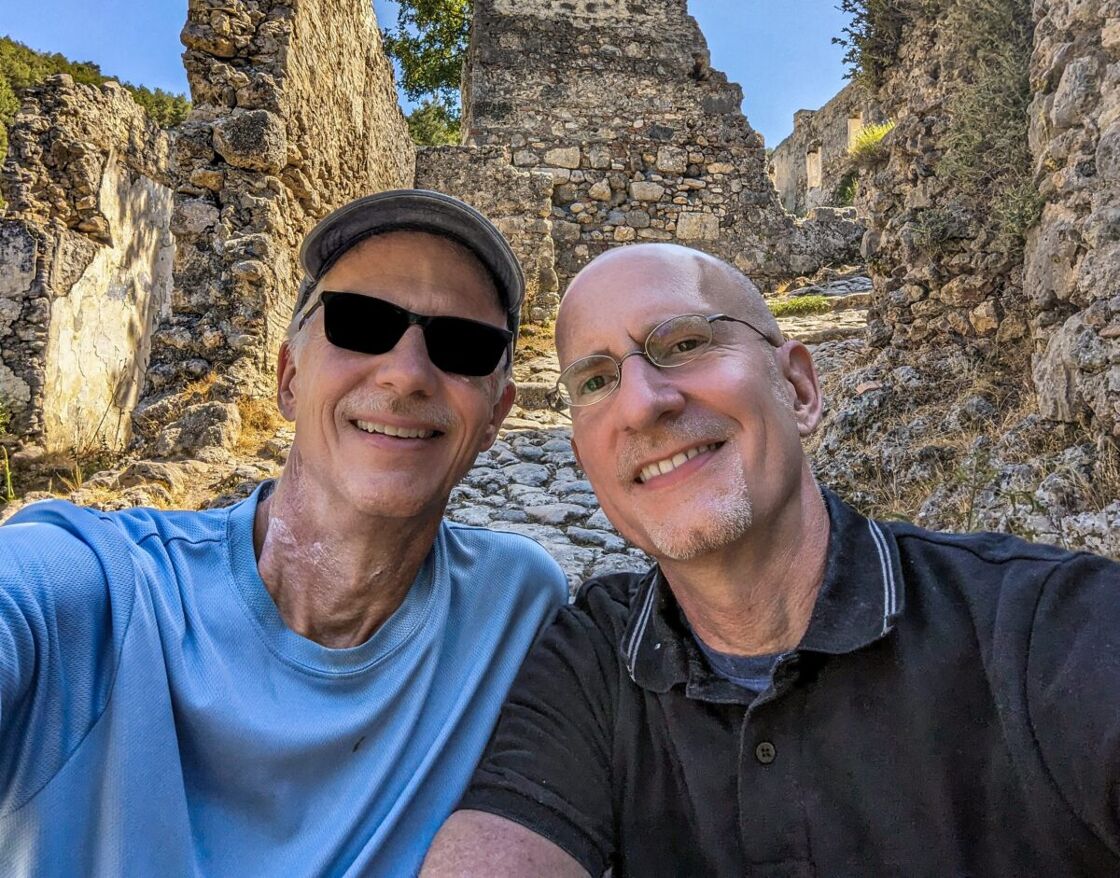
Brent and I are currently spending six weeks in Fethiye, Turkey, on the country’s southern coast. It’s about an hour and fifteen-minute flight from Istanbul (or a nine-hour drive).
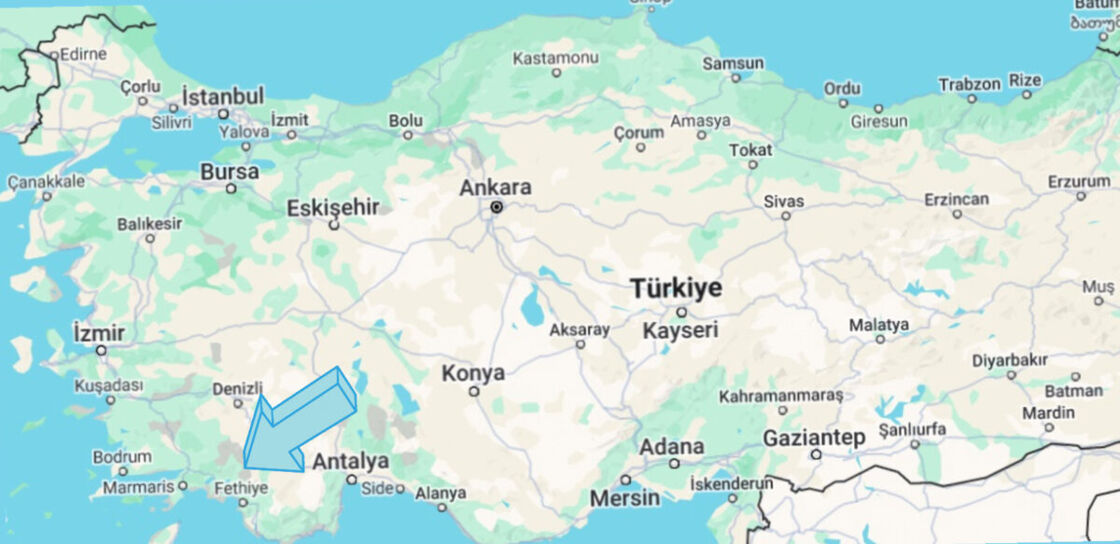
Pack your bags, we’re going on an adventure
Subscribe to our weekly newsletter for the best LGBTQ+ travel guides, stories, and more.
Subscribe to our Newsletter today
The surrounding Mediterranean coastline is frequently called the Turkish Riviera, or more poetically, the Turquoise Coast. Can you guess why?
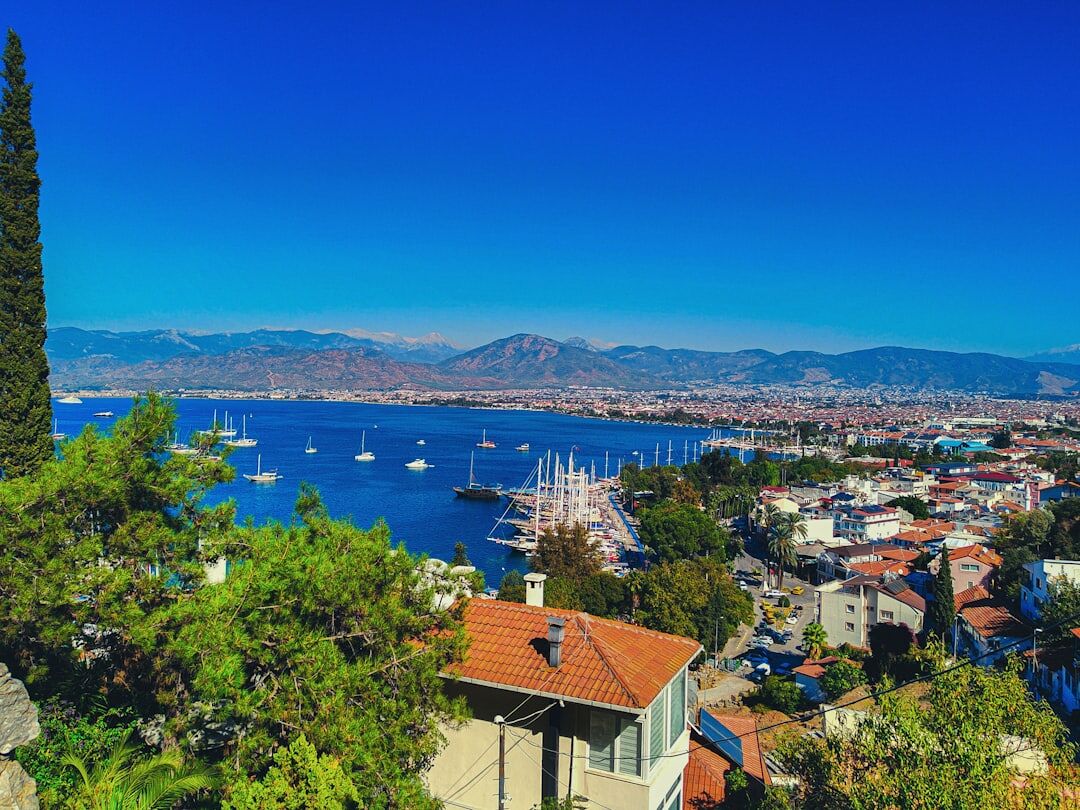
Everyone knows about the ancient civilization of Greece, but fewer people have heard of the neighboring civilization of Lycia that once existed in this area of Turkey.
The Lycian civilization rose sometime before 1200 BCE. Alas, starting in 546 BCE, the Lycians had the misfortune of being conquered by the Persians, then the Romans, and then Greece’s own Alexander the Great.
In short, they were passed around like a football in a game of keep-away.
Eventually, this once-great civilization faded entirely away — so much so that historians now know surprisingly little about them.
We do have references in ancient Egyptian and Hittite manuscripts to the seafaring Lycians as raiders, pirates, and all-around badasses.
Then there are their distinctive and spectacular rock-cut tombs, which survived all that conquering.
Historians speculate that the rich, fancy-pants Lycians buried there wanted to be remembered long after they were gone. Well, guess what? It worked!
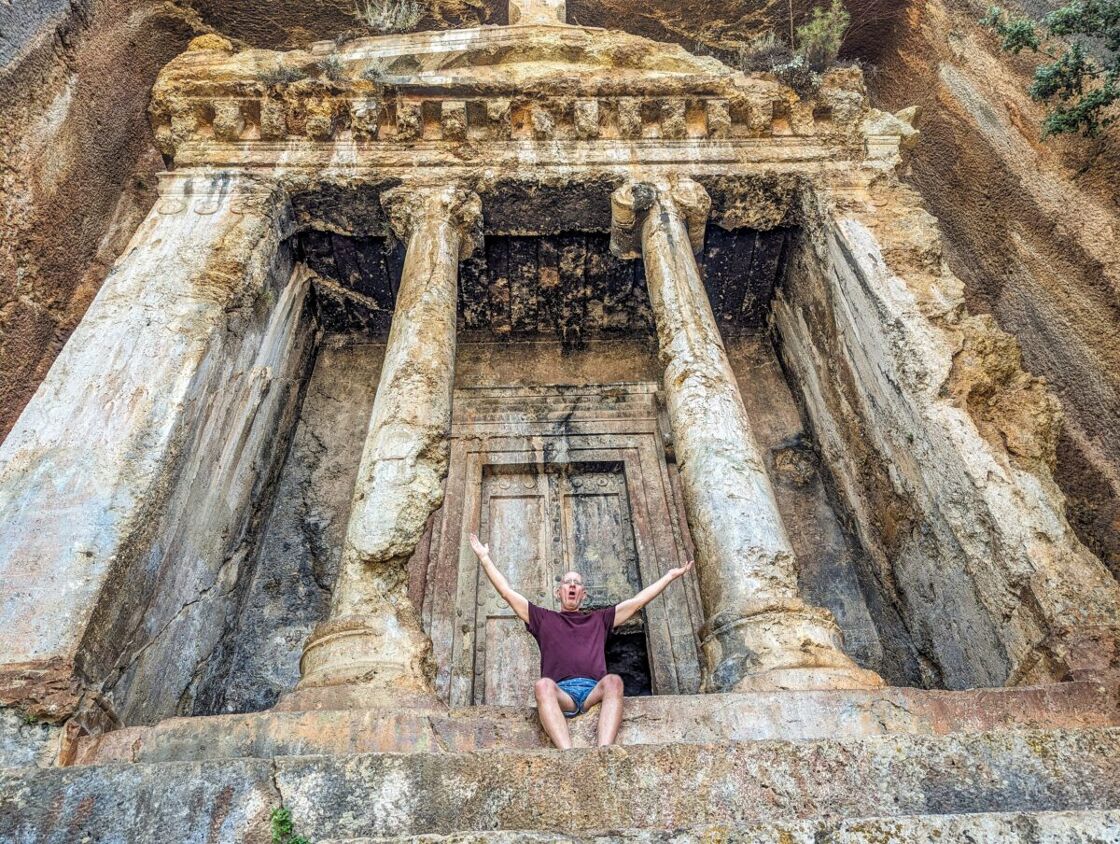
How Did We End Up Here?
We came to Turkey because Brent needed foot surgery, and our 90-day tourist visa in the EU’s Schengen Zone was running out.
But Istanbul was intense, and Brent was tired of recuperating in a tiny apartment. So, we headed south for something more open and tranquil.
We choose wisely. So far, the weather has been perfect: never cold enough for a jacket, even at night, and never hot enough for air conditioning. As for the natural beauty? Well, remember what I said about this being called the Turquoise Coast?
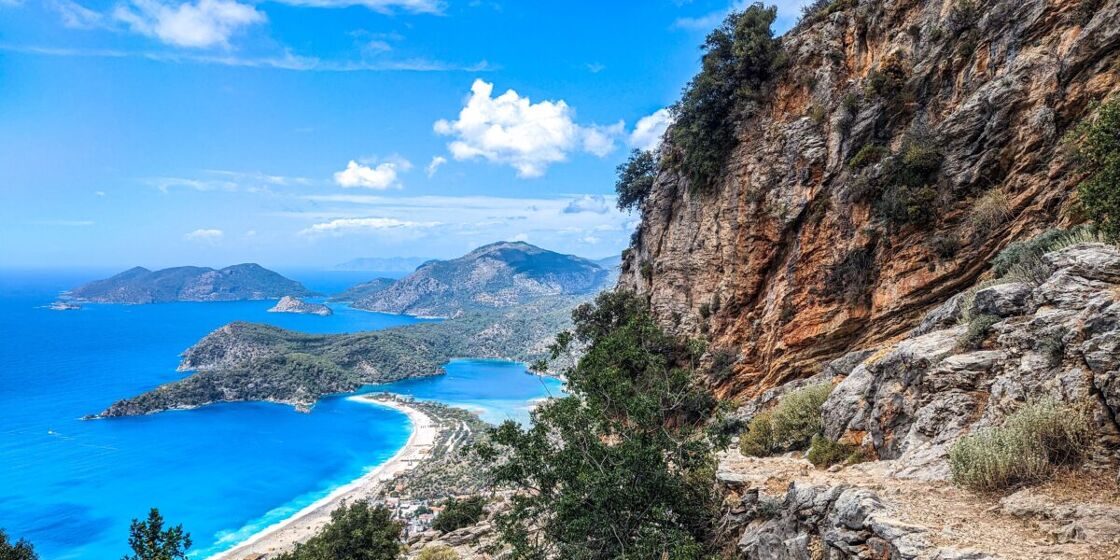
Where Are We Staying?
Our apartment has two bedrooms, two bathrooms, a modern kitchen, a huge living room, a dining area, and two big decks.

It’s very centrally located, a short walk to the touristy part of town — a fairly charming Old Town and a truly lovely seaside promenade — but it’s far enough away to be peaceful. As I write this, I’m listening to birds chirp and looking out at a tree bursting with kumquats.
Well, the apartment is peaceful, except for the mosque directly around the corner. Back in Istanbul, Brent had mixed-to-positive feelings about the Islamic Call to Prayer, which happens five times a day, including at five in the morning.
Here, he says about the local muezzin: “This guy sounds like he’s strangling an elephant!”
And it’s loud, amplified at top volume even in the early morning — so loud that neighborhood dogs all howl along with the loudspeaker. The neighborhood dogs are not fans, and frankly, neither are we.
But it’s a small price to pay for such a wonderful apartment in an otherwise sleepy neighborhood.
And on the plus side, there’s a public market right down our block — fruits and veggies every Friday and all locally sourced! — and a larger market on Tuesday with shoes, T-shirts, dresses, purses, pillows, belts, and everything else you can imagine.
Open-air markets like these are pretty much my happy place. And we’ve been eating fantastically well — for shockingly affordable prices, at least from our Western point of view.

What Does It Cost?
Our Fethiye apartment was $1280 USD for 32 nights, or $40 a night. The same apartment was listed for $2100/month on Airbnb, but we happened to have a friend staying here. He put us in direct contact with the host, and we negotiated a lower cash deal.
It’s a great price, especially given how shocked we were by the high cost of Airbnbs in Valencia, Spain, and Istanbul.
But the unit wasn’t available until ten days after arriving, so we spent that time in two local hotels.
We spent seven nights at S3 King Residence, smack dab in the most touristy part of Fethiye. It was $494, or $71/night—a fine value for a full suite and kitchen. Ironically, given that mosque, it was quieter than our current apartment.
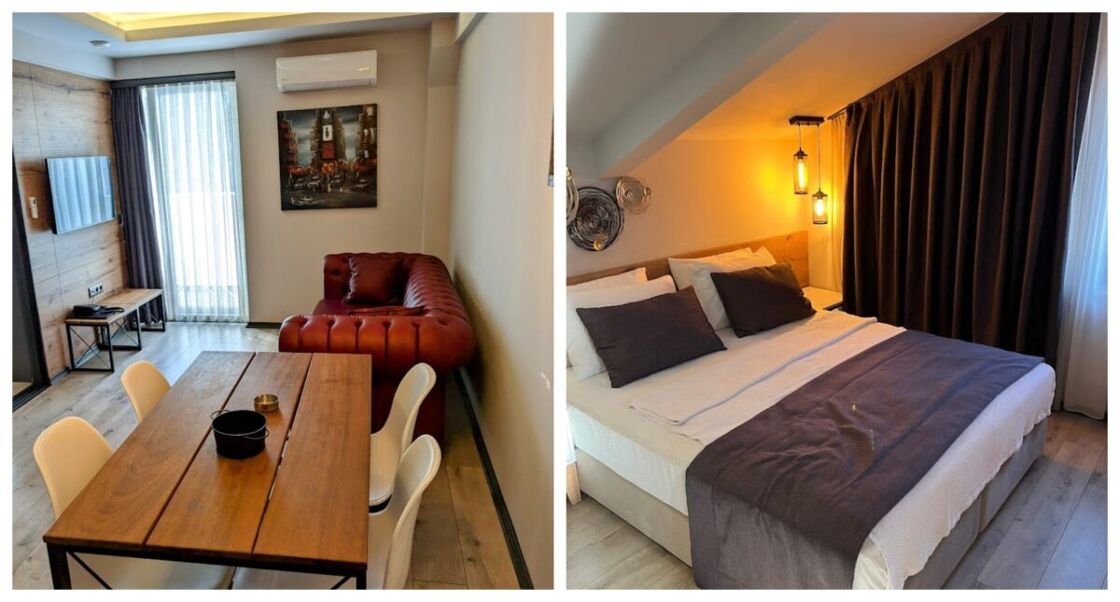
Then we headed up to the little town of Hisarönü in the hills above Fethiye and stayed in a place called Orka Village Hisarönü. We paid $178 for three nights or $59 a night. This was an even better value given that it’s a full resort with a mini-waterpark that Brent loved (even with his sore foot) and one of the most elaborate and impressive breakfast buffets we’ve ever seen — all included in the price.
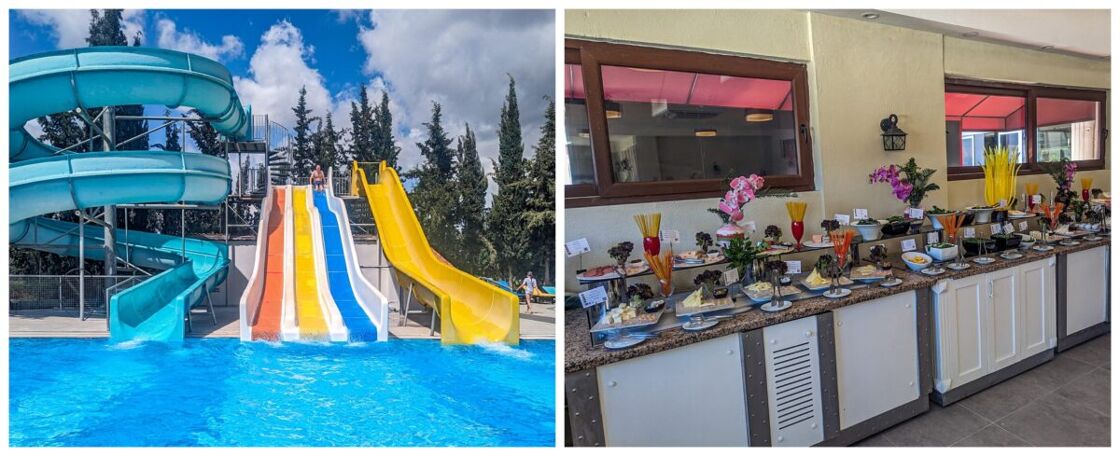
What Do We Think?
We looooove Fethiye!
This is a beach town, so the pace is very leisurely. Better still, it’s a beach town in shoulder season, so the weather is perfect, but nothing is crowded.
There are zillions of great restaurants, and even if prices in Turkey aren’t as low as they were on our last visit (in 2021), they’re still extremely affordable from our American POV. You can easily get a fine sit-down dinner for $10 a person (tip included) and a really nice dinner (with alcohol) for $20 a person.
People seem happier here than in Istanbul. Even the locals sometimes wear shorts — something that just isn’t done in Istanbul. And maybe it’s because it’s the shoulder season, but the merchants also seem much less aggressive. The most assertive you’ll get is a boat owner casually saying, “I can take you on a nice trip.”
I’m happier too. Regular readers know that I can be a tad, uh, obsessive about my photography. I asked one friend if we should visit here, and she said, “Michael, I’m not sure there’s enough for you to take pictures of.”
She wasn’t wrong. There are only so many photos that I can take of the promenade and the boats docked along the waterfront. But this is a good thing because I’m being way more chill.
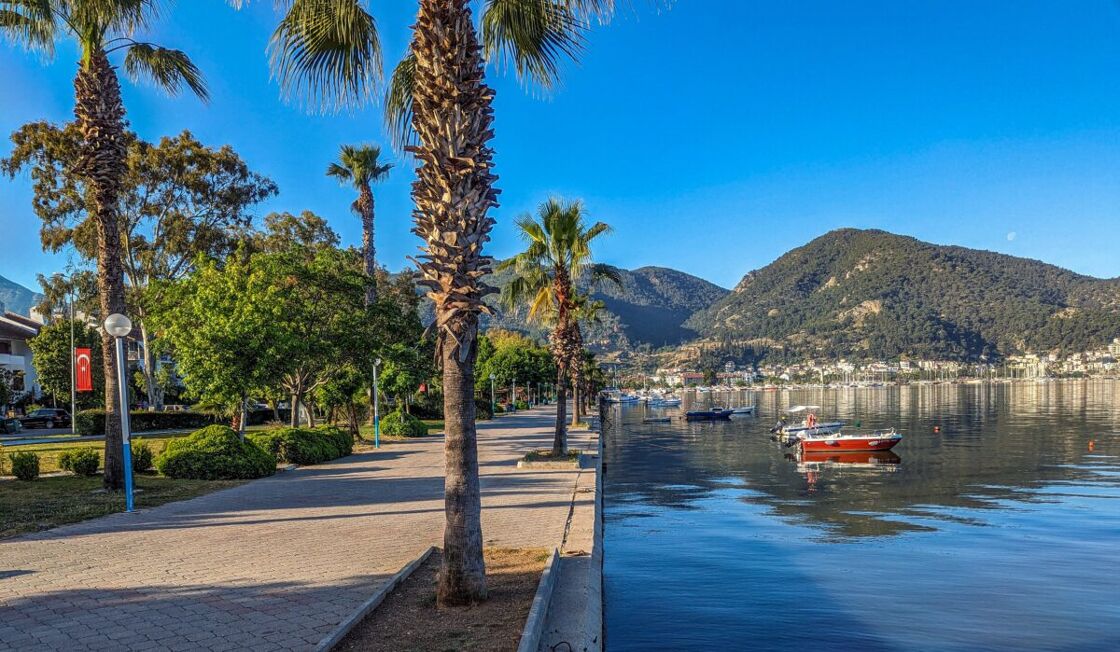
Not surprisingly, this area is popular with expats. One out of twenty residents is now a foreigner, with most of them coming from the U.K., which also sends some 600,000 tourists to this area every year — many of them working-class.
What Have We Been Doing?
There’s not much to photograph in town, but there is a virtually endless amount to do and see in the area directly around Fethiye.
Water Activities
Fethiye sits on the Gulf of Fethiye, tucked into a little bay filled with islands. Boat tours are popular, as are sailing, diving, snorkeling — and paragliding, which is huge here. Will I be paragliding?
I’m crazy, but not that crazy.
One cheap way to get out on the water is to take the water shuttle from central Fethiye to Çalış Beach (100 TL or about $3). But while the ride is nice, we weren’t especially impressed by either Çalış Beach or its long row of beachside restaurants.
That said, we do recommend the nearby village of Ölüdeniz and its very famous Blue Lagoon, which is known for being bright pink. [Kidding!]
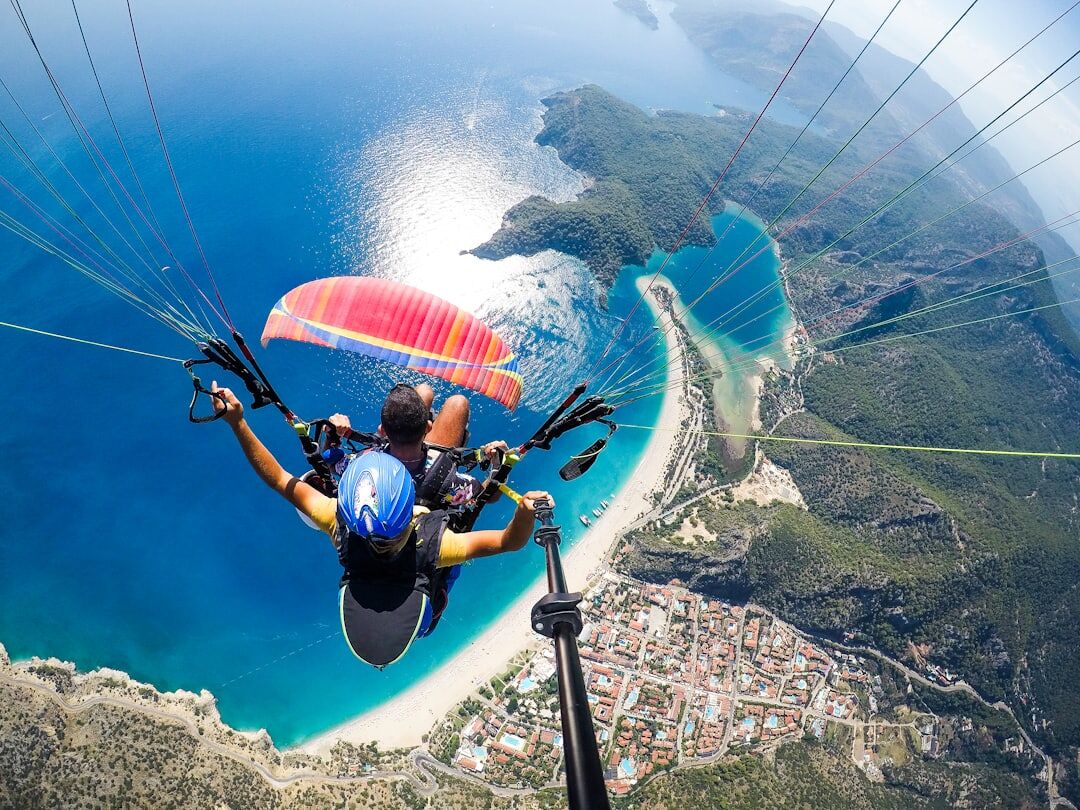
The Lycian Way
Back in the 1990s, a British woman named Kate Clow had the idea of linking the former walking paths that once connected the ancient cities of Lycia into one long trail she called the Lycian Way. It’s now 520 kilometers long and passes through dramatic seaside bluffs, quaint little villages (where you can spend the night), and, yes, fantastic ancient ruins.
The trail starts only a few kilometers from Fethiye.
Brent’s healing foot prevented us from doing more than the first part of the trail. But what we saw of it, we loved! We’ll definitely be back.

Saklikent Gorge
Saklikent National Park is an hour from Fethiye. It is home to the deepest canyon in Europe and one of the most visually spectacular.
Ancient Ruins
Turkey, in general, is packed with Greek and Roman ruins, and this area is especially famous for those amazing Lycian rock-cut tombs.
Another nearby Lycian ruin is the ancient city of Tlos, which looks fairly impressive. But an archeologist friend told us, “It’s badly reconstructed and not accurate at all!”
The Ghost City of Kayaköy
More than a hundred years ago, 6,000 Christian Greeks lived near Fethiye in the village of Kayaköy. But relations between Greece and Turkey soured at the end of the 19th century, culminating in the Greco-Turkish War of 1919–1922. The treaty ending the war required all Greeks living in Kayaköy to relocate to Greece, and the city was abandoned.
Now it’s a ghost city — and the location of a fairly interesting hike through the hills. (Admission is three 110 TL, or about $3).

Fethiye Travel Tips
Here are some tips we learned from spending six weeks in Fethiye.
- If you fly to Fethiye, you’ll arrive at Dalaman Airport (DLM). Be warned, the airport is 45 kilometers from the town itself. The trip into town takes about fifty minutes.
- There is a very affordable airport shuttle run by Havas Bus (150 TL or $5). But if you book your tickets online ahead of time, the drop-down menu is a bit confusing: you’re departing from “Muğla-Dalaman” and going to “Muğla-Fethiye.”
- Uber is illegal here, but taxis are common, metered, and affordable. We had no problems. Taxi stands are common.
- Most international non-stop flights to Fethiye are seasonal and come from the U.K. Most other flights go through Istanbul. Turkish Airlines has a great reputation, which is reflected in their higher fares. We flew with the low-cost carrier Pegasus Airlines and they were fine.
- For in-city transportation, Fethiye uses large white vans called “dolmus.” They might seem a little confusing at first, but this in-depth guide will explain everything for you. These dolmus go almost everywhere, even to neighboring villages, and they’ll be much cheaper than tour buses, and you can even pay with the tap of a credit card. Then again, they’ll also be crowded, especially in summer: “dolmus” literally means “apparently stuffed.” But hey, it’s the Turkish experience!
- Fethiye gets 300 days of sunshine yearly, and the climate is fairly mild year-round. The coldest month is January, with temperatures of 11 C (51 F), and August is the hottest, with average highs of 29 C (83 F). Winters can be a bit rainy, while summers are humid.
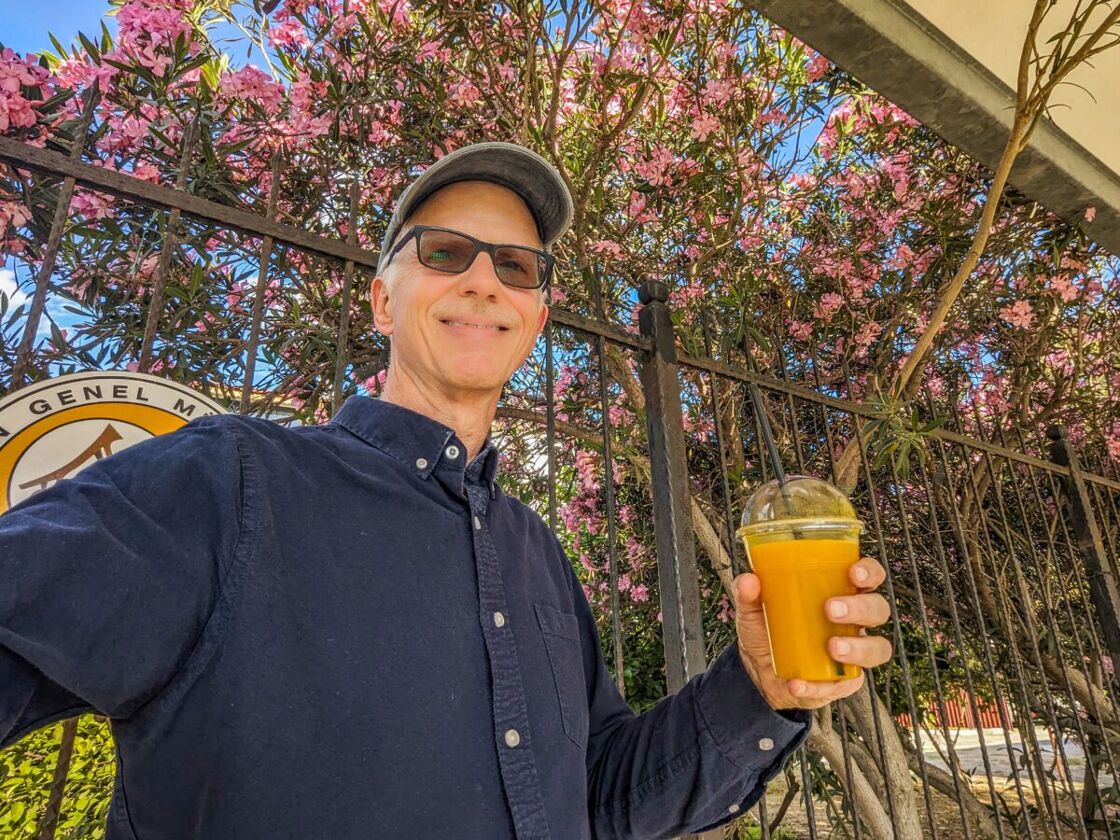
- We recommend staying in the city center, at least for shorter stays. It’s a very compact area with easy access to Fethiye’s lovely promenade.
- Medical and dental care is plentiful here. I went to Private Lokman Hekim Esnaf Hospital for a minor issue, which was solid if crowded. But there are separate areas for tourists who are given translators and first-class treatment. (Yes, we felt very guilty about this.)
- Keep your eyes open for loggerhead turtles, which the area is famous for. They like to hang around where freshwater streams flow into the gulf. And at the right time of year, you might even see them come ashore to lay their eggs.
- In Old Town Fethiye, you’ll find Paspatur Çarşısı, a sort of mini-Grand Bazaar. And you can pick out a fish at the Fethiye Fish Market, and any of the surrounding restaurants will immediately prepare it for you!
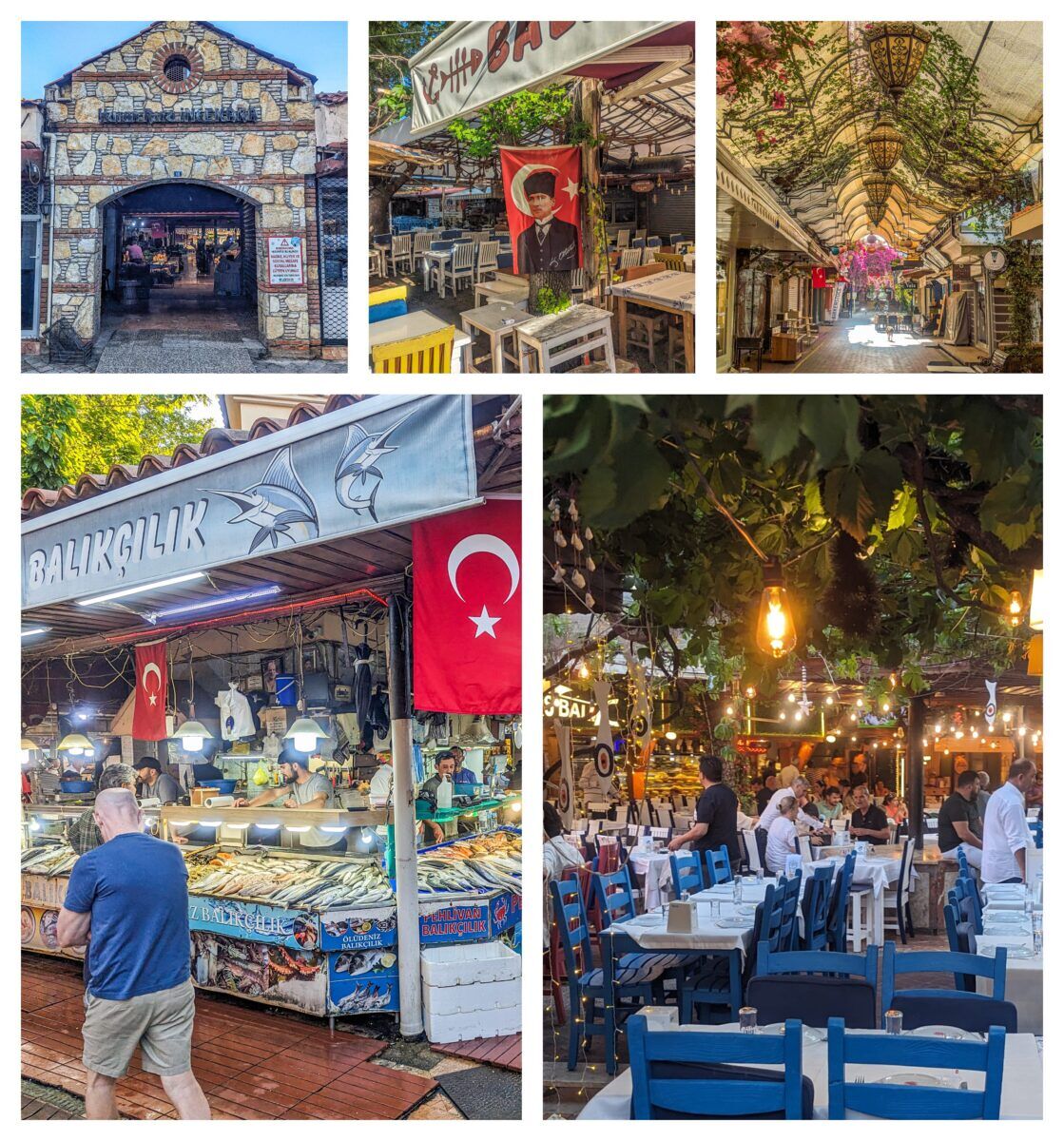
- Fethiye has lots of hammams to choose from. The most touristy are the Old Turkish Bath and the Sultan Hamam and Spa Center, and they’re the most expensive but also probably the most impressive.
- Most businesses in town take credit cards, but our American credit cards were rejected regularly enough that we always kept Turkish lira with us.
- Cash machine fees can be ridiculously high in Turkey. For no-fee machines, look for PTT ATMs — owned and operated by the Turkish postal system. If these don’t work with your card, use VakitBank machines outside Old Town, where the fee is two percent.
- Finally, be sure to have a “full” Turkish Breakfast at one of the restaurants along the promenade. There is so much food you probably won’t need another meal all day, and the views are fantastic.
Michael Jensen is a screenwriter, author, and half of a couple of traveling gay digital nomads. Subscribe to their free travel newsletter here.

 Mark
Mark 





